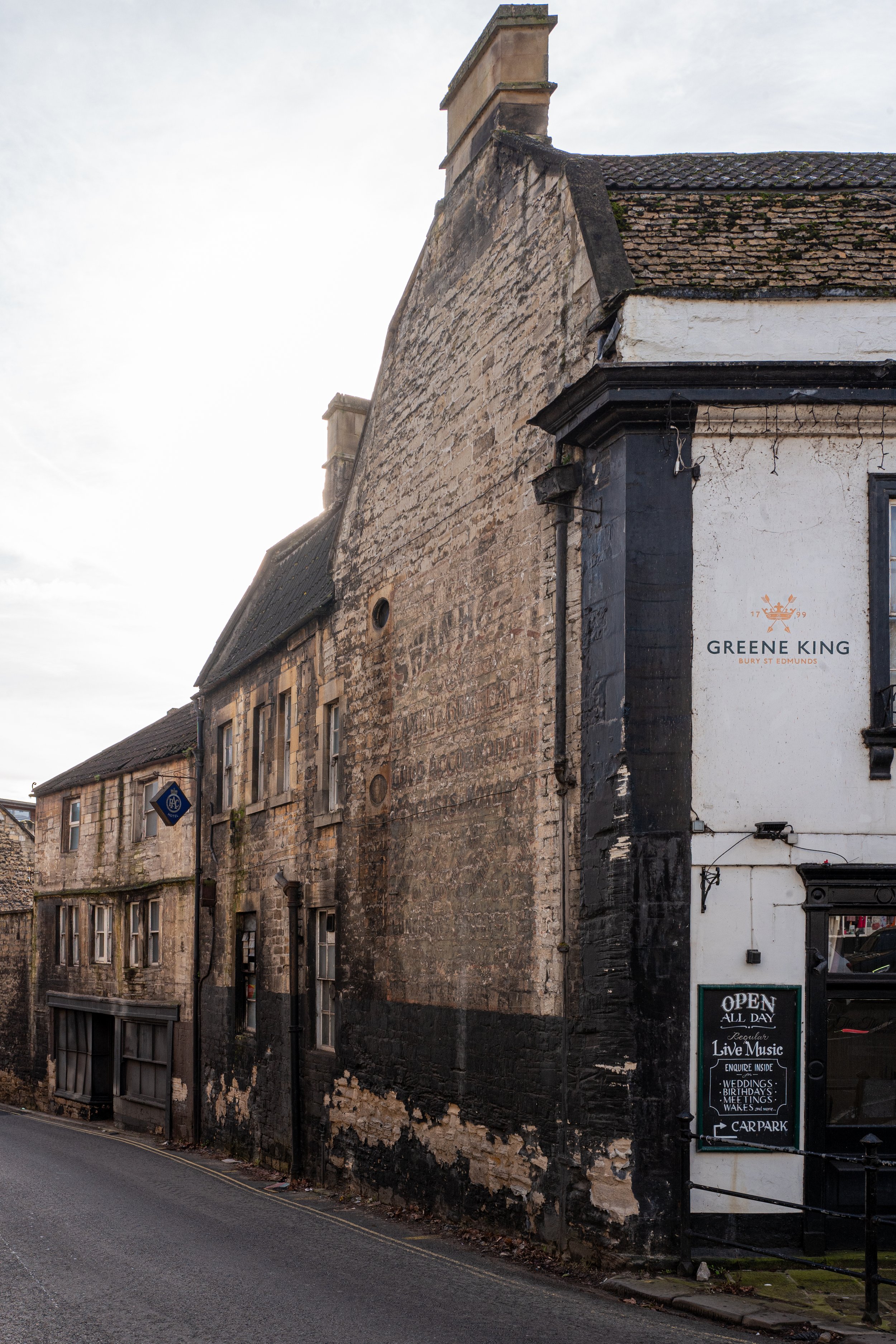Ghost signs: fragile reminders of times past
Rosie MacGregor looks at historic signage on buildings in Bradford on Avon; Andrew Eberlin took the pictures.
A haunting memory of the past are the so-called 'ghost signs' - those faded historic advertisements and old shop signs hand-painted on masonry or brickwork. Most date from the late 19th to early 20th centuries. Many are still visible on buildings that have since changed use and ownership. Usually discovered in urban areas, they are an intriguing reminder of our social history, changing tastes and culture.
Unfortunately, in many towns and cities some of these have been badly restored and have lost their authenticity. No attempt, however well-intentioned, should ever be made to overpaint or repair these reminders of how our lives and the products we use have changed over time.
There are many fine examples of ghost signs in Bath. Their faded appearance is part of their charm, and they enhance the character of buildings in high streets and commercial centres, evoking memories of how we once lived. Occasionally they are rediscovered when later structures or modern advertising hoardings are removed. Historic England is currently maintaining a photographic record of these historic signs and mapping their location.
The most prominent example in Bradford on Avon is on the gable wall of The Swan Hotel, but that too, like the hotel itself, is a ghostly echo of what it was in the past.
The Preservation Trust is proposing to photograph the signs of which we are aware as a means of preserving them. The information will be shared with Bradford on Avon Museum and Historic England. However, we will not be carrying out any works of restoration.
We have also had a query from a Trust member relating to the restoration of historic street signage painted on the walls of some buildings in Bradford on Avon. We had previously been advised that any proposal to repaint these faded signs should be resisted. However, Bath Preservation Trust has recently been working with Bath & Northeast Somerset Council to restore historic street signage in Bath. These worn nameplates are incised in the stonework or painted on buildings. The work is funded by the City of Bath UNESCO World Heritage Site Advisory Board. Repainting the signs is being carried out by highly skilled signwriters, using mineral paints to match the original in style and colour and without harm to the masonry.
We asked Wiltshire Council for an opinion. The answer we received was that it is a complex proposal that raises many different issues. There would be no right to carry out the work without the consent of the building's owner, whether privately owned or a highway asset; in the event of access being granted, there would be a need for insurances. There is also the potential for a requirement for listed building consent which would need to be assessed on a case-by-case basis. There is unlikely to be any funding available from Wiltshire Council. There would also be significant issues arising where the historic signage does not match current street naming. This could cause confusion, not least for emergency vehicles.
Wiltshire Council was unable to provide any indication of the likely acceptability of such proposals without detailed information on the likely scope, location or nature of the works. It was suggested that if we are keen to pursue such a project, the first step would be to collate a photographic survey of known examples together with some indication of the works proposed in each case. This would enable the Trust to seek the views of Bradford on Avon Town Council, local people and property owners, as well as allowing Wiltshire Council's planning department to give a view with regard to any requirement for consents and to seek the views of highways colleagues who are responsible for highways assets and signage.
The Trust has agreed to establish a small working group involving our members to look at how best to proceed. Even if it were concluded that the works were not feasible, such work would not be wasted as a record of the known examples and their current condition would certainly provide a valuable historic record and the information could be provided to Bradford on Avon Museum.
Thanks especially to Helen Garside, Principal Conservation Officer at Wiltshire Council, to Andrew Rolph who previously carried out a photographic survey and to Andrew Eberlin for the current photos.
If you are interested in joining the working group, please get in touch at admin@bradfordheritage.co.uk















